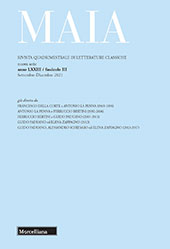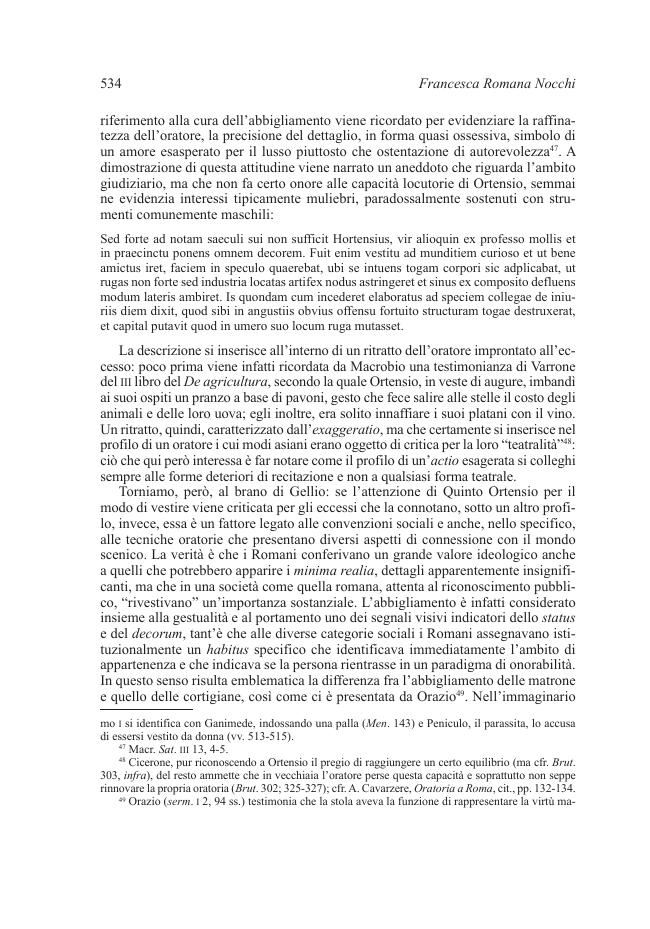Oratori finitimus comoedus : modelli di gestualità nell'oratoria antica
P. 526-542
In a passage from Noctes Atticae (I 5) Aulus Gellius associates Quintus Hortensius Hortalus with Demosthenes for the effeminate characteristics of their habitus and their scenic gestures by narrating two episodes related to this aspect. The anecdote of Demosthenes goes back, ultimately, to Aeschines (I 131) in which the reference to women's clothing is closely connected to the nickname Battalos/Batalos, who could be identified with a wellknown flute player, according to the topos of the effeminate modes of scenic artists, in particular musicians and dancers: the pseudonym thus lent itself to various name-games, with malicious allusion to the orator's stuttering as well as to his homosexual tendencies.
Also Hortensius' actio is approached to an excessive and effeminate form of acting, that of a pantomimist called Dionysia. This shows that, despite the changing times, the terms of vituperatio remain the same: what is criticized is excess, embodied by certain scenic forms that for their camouflage character could not be useful for oratory. Passive homosexual traits allude to what was actually an accusation of cowardice against the rival and aim at dismissing his testimony in the forensic agony as unauthoritative. [Publisher's text]
-
Articles from the same issue (available individually)
-
Information
ISSN: 2611-805X



